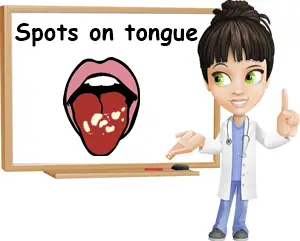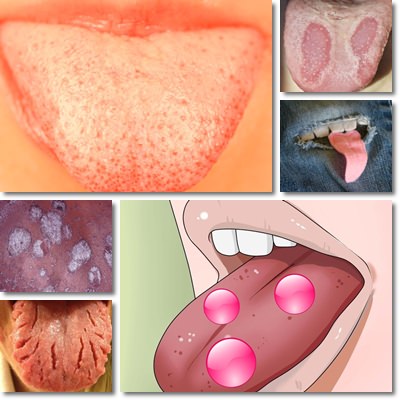We sometimes happen to notice strange spots on our tongue when looking in the mirror to brush our teeth and wonder how can our tongue even develop them? Spots, dots, bumps, rashes, cuts and all sorts of patches and small injuries can develop on the tongue, mainly due to the fact that it is a highly sensitive area.
Poor nutrition, vitamin and dietary mineral deficiencies as well as bad lifestyle habits such as smoking can have a strong negative impact on tongue health and, in time, compromise oral health entirely.
Our tongue is highly sensitive to extremes: food acidity, pungency, extreme temperatures etc. It’s an organ made up for the most part of muscles, 8 to be exact.
We use our tongue for chewing food, or mastication, assessing taste, cleaning our teeth and speaking.
Certain medical conditions and other factors can have negative effects on tongue health, causing various symptoms, the most common of which are spots. These spots come in a variety of colors and shapes and produce the most diverse of effects.

The most common types of spots on the tongue include the following:
1) Geographic tongue
Also known as benign migratory glossitis or erythema migrans, geographic tongue is a benign medical condition characterized by the appearance of smooth, but somewhat irregular patches on the tongue.
Patches can be small and take the form of pink spots, or larger and with an irregular shape. The condition makes it look as if the tongue is peeling itself off at the top.
This is partly true because the patches appear because our tongue loses part of its lingual papillae, the tiny bumps that give it its wrinkled, rough texture. The patches tend to have a more pronounced pink or red color than the rest of the tongue and slightly lighter edges.
Having geographic tongue is harmless, but can engender a bit of discomfort or a burning sensation in a small percentage of reported cases (this is due to inflammation).
The patches themselves appear and disappear without notice, may last from several days to several weeks and up to a year and are often found to migrate or move to other areas of the tongue, hence the name ‘geographic tongue’.
The overall look of a tongue with migratory glossitis is that of a map of islands. There are no known factors that directly cause geographic tongue and some researchers believe the condition may be genetic.
What does geographic tongue look and feel like?
1) Irregular pink-reddish patches on the surface of the tongue.
2) Patches differ in size, shape and migrate to other areas on the tongue.
3) Patches may persist up to several days, weeks or months.
4) The condition may take up to a year to clear.
5) Some people may experience pain or a burning sensation, but these are not common.
6) Sensitivity to certain foods such as acidic or spicy foods, alcohol-based mouthwash etc. may set in.
7) Many people remain unaware of the condition up until it is concidentally diagnosed.

It is believed that several factors can contribute to the formation of geographical tongue:
1) Foods that are too hot, too spicy or too acidic (salty foods should also be avoided).
2) Toothpaste with too much fluoride or aggressive whitening agents.
3) Strong mouthwash brands (they have an aggressive action on our gums, tongue).
4) Smoking and tobacco chewing.
5) Warm water with lemon (it is highly acidic, damaging tooth enamel and threatening tongue and dental health).
6) Pollen allergies, particularly to Parietaria officinalis, or wall pellitory (from my experience).
7) Amoxicillin based antibiotics.
8) Vitamin and mineral deficiencies.
9) Malabsorption problems (problems absorbing vitamin and minerals at the intestinal level).
10) Certain conditions may also promote geographical tongue: fissured tongue and psoriasis.
11) Genetics. Geographical tongue tends to run in the family.
12) Stress. Reports suggest the condition may be worsened by stress.
2) Fissured tongue
Also called plicated tongue, furrowed tongue or lingua plicata, fissured tongue is a harmless condition characterized by the appearance of visible furrows or fissures on the surface of the tongue.
While geographical tongue occurs in about 3% of the population, fissured tongue is estimated to affect around 10% of people or more. Aside from a mild burning sensation, there are really no other symptoms to fissured tongue.
However, the deep furrows covering the tongue may trap food easily. These residues can accumulate bacteria and promote bad breath, a bad taste in the mouth or cause an infection.
Maintaining a good oral hygiene is pivotal for people with fissured tongue. Genetics and aging can increase risks. Since it is a benign condition, no treatment is necessary.
3) Black, hairy tongue
In some cases, black spots or tiny, black bumps may develop on the tongue and cover it entirely. This is considered to be an anomaly and arises as a result of the overgrown hair-like lingual papillae on the surface of the tongue.
Normally, the lingual papillae become worn down by chewing especially, but, in some people, they may grow too long, in which case they are more likely to trap bacteria and eventually turn black, or a darker color like gray or brown.
The colors are a result of a specific type of bacteria called chromogenic bacteria, which also stains teeth turning them yellow, green, brown or black. Eventually, the entire tongue may turn black and take on a hairy aspect due to the longer than usual papillae.
The black color can also be a result of compounds such as tannins in coffee, tea, or substances such as tobacco, dark chocolate, alcohol, antibiotics, fungus infections etc.
Exposure to chemicals can also cause black hairy tongue. In any case, it is best to have it checked by a doctor. Your doctor may ask you to cut out certain foods from your diet, give up smoking, practice good oral hygiene by brushing your teeth twice a day, flossing and using mouthwash. It is recommended to avoid chlorhexidine mouthwash because of its potential to stain even teeth.
Many people report seeing improvements after correcting nutritional deficiencies. There has been research that suggested such spots on the tongue may be a result of vitamins A, C, E and zinc deficiency, so supplementing with these vitamins and minerals can prove highly beneficial.
Although there is not a consensus on the matter, supplementing with folic acid and vitamin B12, for example, proves efficient at treating and preventing red spots on the tongue.
4) Red spots on the tongue
Red spots on the tongue are fairly common and can be caused by many things. Inflamed lingual papillae, the bumps that give the tongue its aspect, may cause painful, red spots.
This can happen as a result of injury (biting), spicy foods etc. A lack of vitamin B12 can also lead to red patches on the surface of the tongue, but soreness may also install.
Acid reflux , allergic reactions to certain foods, eating foods that are too spicy are all possible causes. Mouth ulcers may manifest at a certain point as red bumps or spots on the tongue as well, despite their prevalence on the inside of the cheeks, behind the lips etc.
Conclusion
The above description of spots on the tongue should only be used for informative purposes and does not substitute professional medical advice. Whenever confronted with a medical issue that poses concern, it is best to see a doctor and rule out other potential causes such as oral cancer, which may present itself in the most bizarre of forms and cause white, red or black spots on the tongue but also in other areas of the mouth as well as other symptoms. Overall, good hygiene, balanced nutrition and healthy lifestyle habits can improve oral health considerably and help prevent spots of any kind on the tongue.
